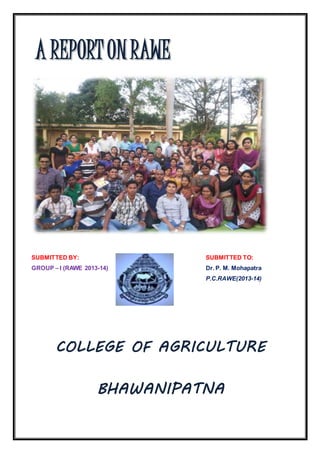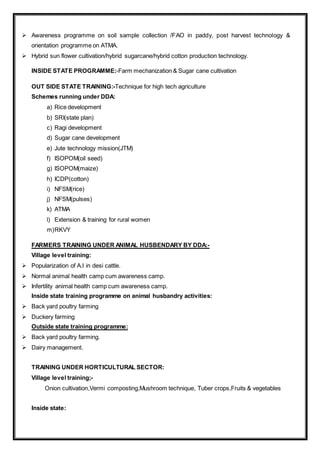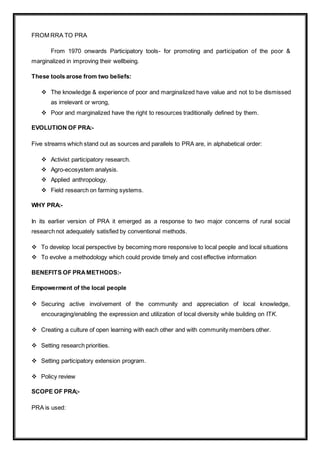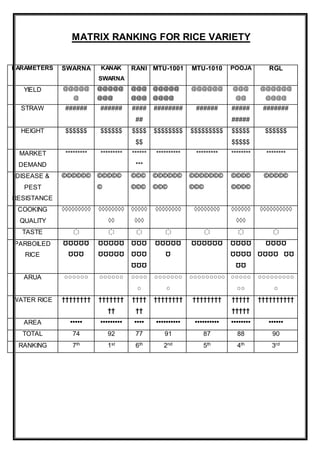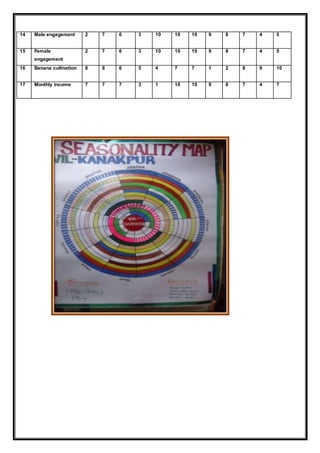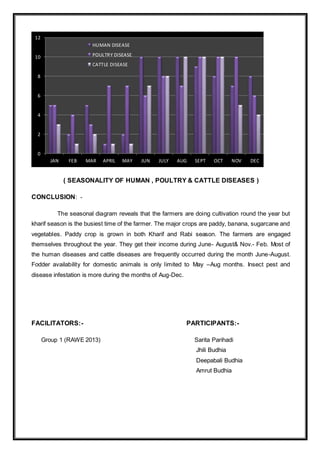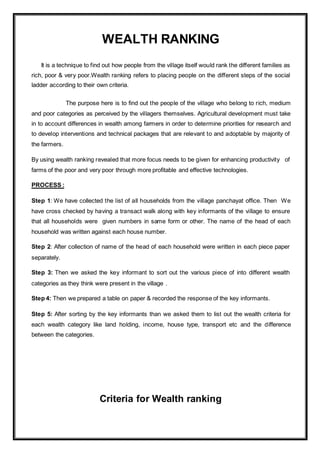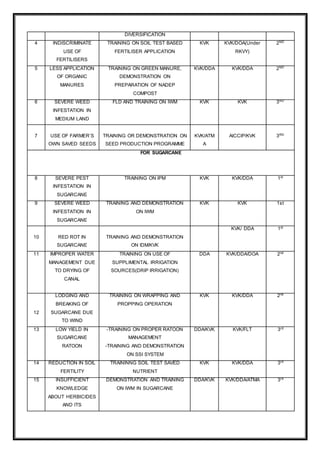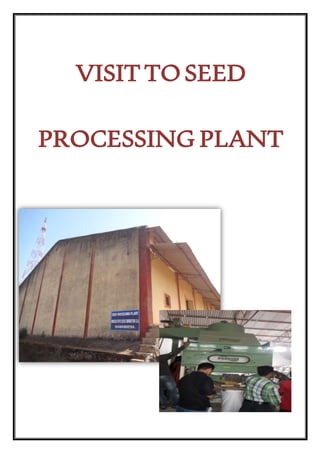This document provides information about the College of Agriculture in Bhawanipatna, Odisha, India. It summarizes the college's establishment in 2009, current enrollment of 184 students selected through state and national entrance exams, and facilities including hostels and ongoing construction projects. It also notes the college's staffing status, with 23 approved teaching positions of which 17 are currently filled, and 16 approved non-teaching positions of which 8 are filled.
